
SpaceX will launch of a batch of Starlink v2-mini satellites for their second generation high-speed low Earth orbit internet satellite constellation. The launch includes a mix of 13 Direct to Cell and 7 standard v2-mini satellites.
The cost of the launch is $69.75 million
The forecast calls for a temperature of 57°F, clear skies, 3% cloud cover and a wind speed of 8mph.
SpaceX launches Starlink Group 6-77 smallsats from Cape Canaveral

SpaceX succeeded in launching Starlink Group 6-77 that included 23 smalllsats after having to scrub the launch twice earlier this week. After just a few minute delay that was not explained, at 3:19 PM ET Falcon 9 launched the smallsats into Low Earth Orbit from Cape Canaveral Launch Complex 40.
The first delay occurred on Sunday, November 3, when a helium issue required the team to stand down.
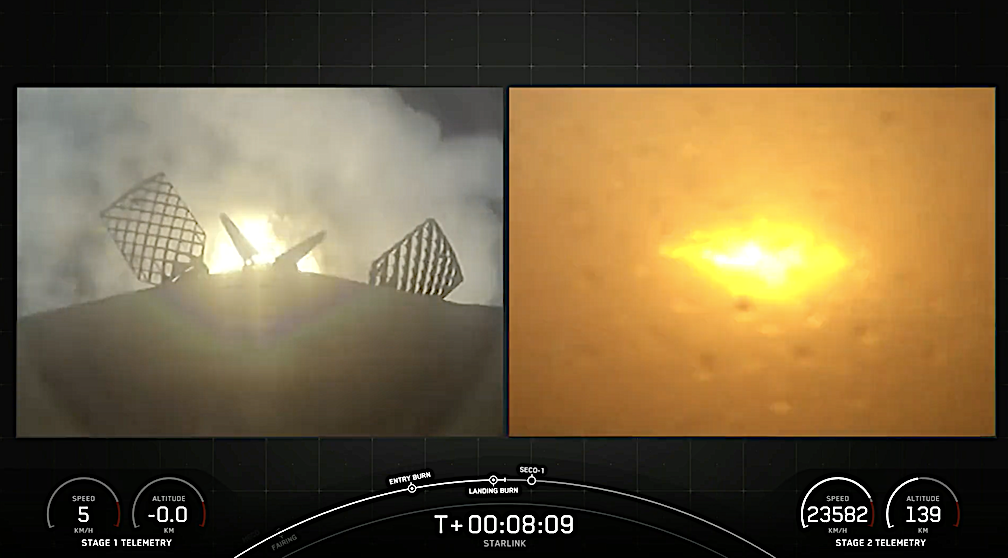
On Thursday, November 7 at 3:19 p.m. ET, Falcon 9 launched 23 Starlink satellites to low-Earth orbit from Space Launch Complex 40 (SLC-40) at Cape Canaveral Space Force Station in Florida.
This was the third flight for the first stage booster supporting this mission, which previously launched Crew-9 and now two Starlink missions.
On Thursday, November 7 at 3:19 p.m. ET, Falcon 9 launched 23 Starlink satellites to low-Earth orbit from Space Launch Complex 40 (SLC-40) at Cape Canaveral Space Force Station in Florida.
This was the third flight for the first stage booster supporting this mission, which previously launched Crew-9 and now two Starlink missions.
SpaceX’s busy Wednesday with two Starlink satellites’ launches planned on East and West Coasts

SpaceX is targeting Wednesday, November 6 for a Falcon 9 launch of 23 Starlink Group 6-77 satellites to low-Earth orbit from Space Launch Complex 40 (SLC-40) at Cape Canaveral Space Force Station in Florida. Liftoff is targeted for 3:39 p.m. ET, with backup opportunities available until 7:39 p.m. ET. If needed, additional opportunities are available on Thursday, November 7 starting at 3:13 p.m. ET.
A live webcast of this mission will begin about five minutes prior to liftoff, which you can watch here and on X @SpaceX. You can also watch the webcast on the new X TV app.
This is the third flight for the first stage booster supporting this mission, which previously launched Crew-9 and one Starlink mission. Following stage separation, the first stage will land on the Just Read the Instructions droneship, which will be stationed in the Atlantic Ocean.
SpaceX orders “Hold, hold, hold” at two minutes left and scrubs Starlink Group 6-77 due to helium leak
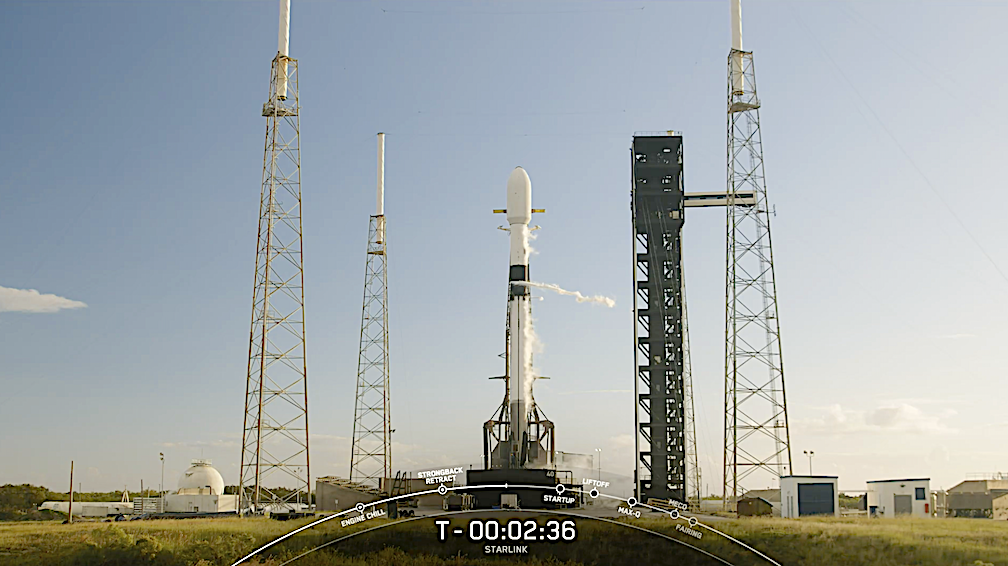
All ready to launch SpaceX’s Starlink Group 6-77 of 23 smallsats on Sunday, from Launch Complex 40 at Cape Canaveral Space Force Station, when the call came to scrub with two minutes and 36 seconds remaining before liftoff. “Holt, hold, hold” came the word.
During SpaceX’s abbreviated launch webcast, a countdown hold was announced with the clock stopping 2 minutes, 36 seconds before liftoff.
“Hold, hold, hold. Stand down for helium stage one,” a launch director said.
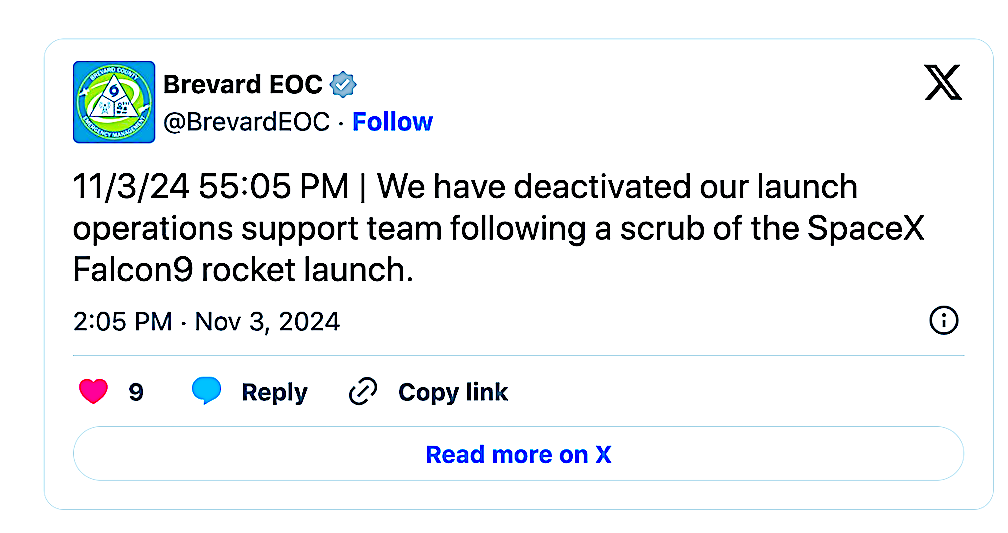
“Standing down from today’s launch. Vehicle and payload are healthy,” SpaceX officials said in a 5:04 p.m. post-scrub tweet.
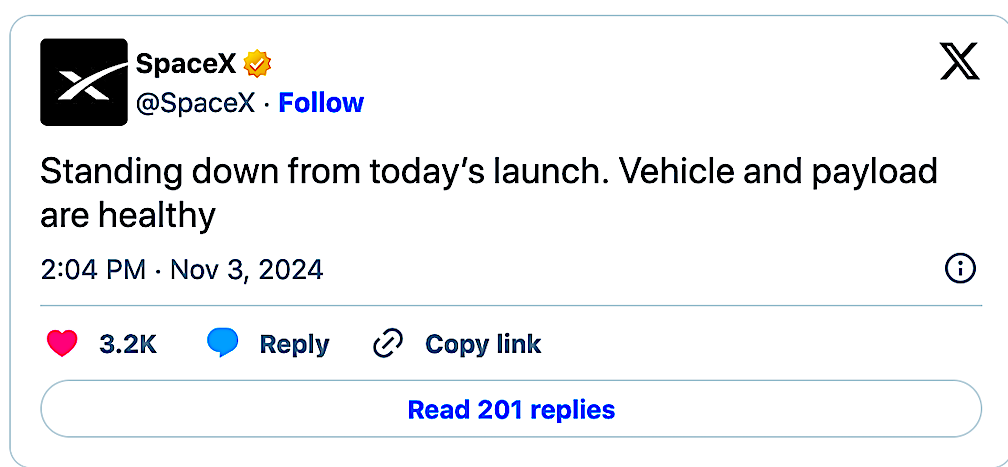
This afternoon, SpaceX officials announced the Starlink 6-77 backup launch opportunity is set for 4:31 p.m. Monday. The time slot will make it challenging as the Falcon 9 would take flight five hours before the next launch.
The next launch is the SpaceX-NASA CRS-31 resupply mission to the International Space Station which lifts off at 9:29 p.m. from pad 39A at adjacent Kennedy Space Center.
Tomorrow will be an interesting day for sure.
SpaceX plans Sunday launch of Group 6-77 of 23 Starlink smallsats
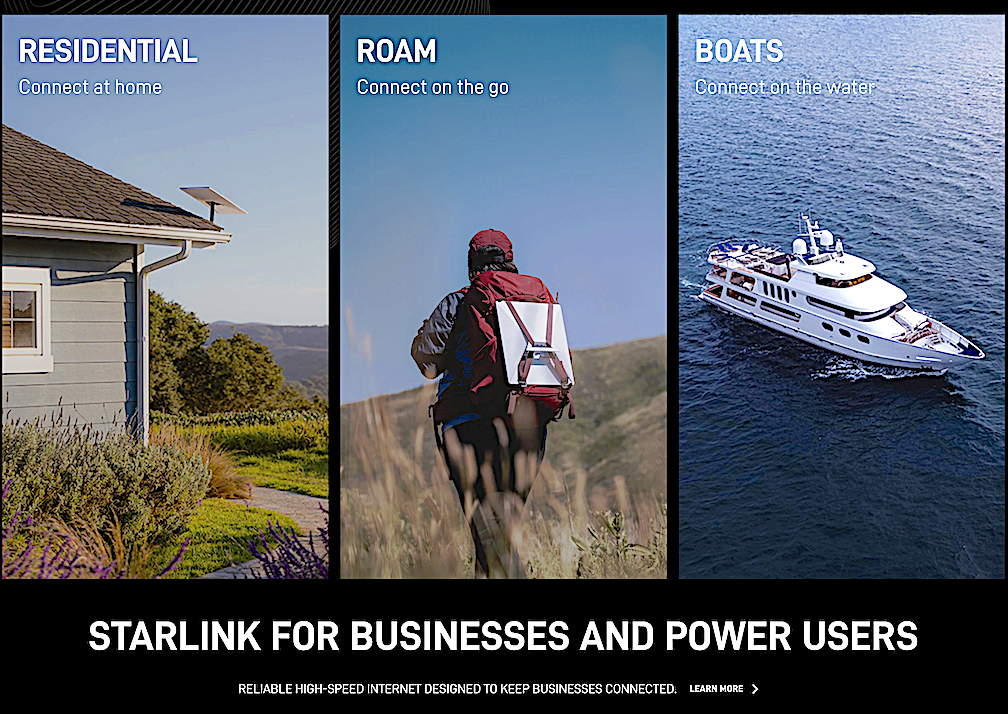
SpaceX is targeting Sunday, November 3 for a Falcon 9 launch of 23 Starlink satellites to low-Earth orbit from Space Launch Complex 40 (SLC-40) at Cape Canaveral Space Force Station in Florida. Liftoff is targeted for 4:57 p.m. ET, with backup opportunities available until 8:27 p.m. ET. If needed, additional opportunities are also available on Monday, November 4 starting at 4:31 p.m. ET.
According to weather officials, there’s a 90% chance of favorable weather conditions at the time of the launch. The forecast calls for a temperature of 81°F, scattered clouds, 28% cloud cover and a wind speed of 16mph.
A live webcast of this mission will begin about five minutes prior to liftoff, which you can watch here and on X @SpaceX. You can also watch the webcast on the new X TV app.
This is the third flight for the first stage booster supporting this mission, which previously launched Crew-9 and one Starlink mission. Following stage separation, the first stage will land on the Just Read the Instructions droneship, which will be stationed in the Atlantic Ocean.
